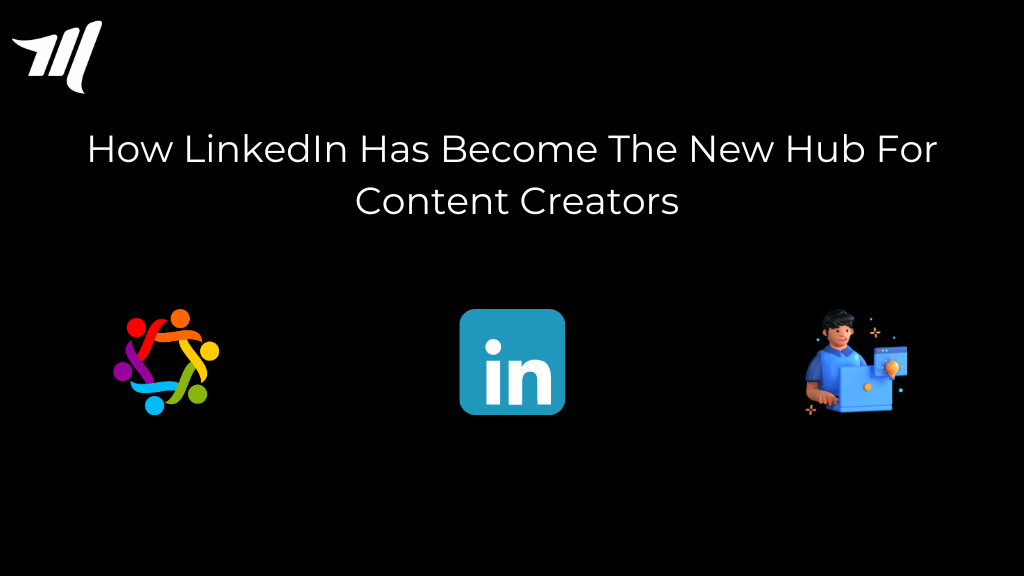LinkedIn is having a moment, attracting attention from custom agencies and artists alike. However, this shift has been silently taking place over the years, establishing LinkedIn as a safety for content creators.
The trend gained pace in 2020 when the worldwide pandemic drove the move to remote labor and digital connectivity almost overnight.
With real conferences and events canceled throughout the world, professionals turned to LinkedIn and other social media platforms to stay relevant, make contacts, and come up with innovative strategies to develop their audience.
The more this occurred, the farther LinkedIn shifted from being a traditional professional network to becoming a content recommendation engine.
The platform’s focus on creators was also helpful.
In 2021, it established its creator management program, which provided chosen creators with a personal manager and the opportunity to learn about impending LinkedIn news, debate content strategy, and beta-test new features and tools. The program reappeared a year later under a new name: LinkedIn Top Voices. It remains an invitation-only program, with a worldwide collection of experts covering a variety of topics overseen by LinkedIn’s 250-person editorial staff.
This program, together with modifications to the platform’s algorithm that prioritize interaction over likes or shares, greater video content, the rise of LinkedIn influencers, and the introduction of newsletters, are just a few of the elements that have contributed to this shift.
Marketers, agencies, and creators noticed what was occurring and wanted to be involved. The Social Standard, for example, publishes two newsletters (The Social Brew and The Business Brew) that reach over 100,000 individuals each week.
Companies like these imagine LinkedIn evolving to resemble its competitors while maintaining its distinct focus on professional networking, career advancement, and industry-specific information.
And if there’s one thing that says “LinkedIn transformation,” it’s the growth of LinkedIn specialty agencies.
Just as agencies shifted to become Snapchat-first or TikTok-first when the platform of the time was talked up, some businesses are now going all in on LinkedIn, hoping to be on the rise as the network hits a new height.
Creator Authority is likely to be on the minds of anyone paying careful attention to this development. Co-founded by Brendan Gahan (CEO and member of the invite-only LinkedIn Top Voice program) and Mandi Hopper, this LinkedIn-focused firm, which began in January, has positioned itself at the forefront of the discourse surrounding marketing’s most recent trend.
“We’re developing strategies specific to LinkedIn and translating campaigns to suit the LinkedIn ecosystem,” Gahan told me. “We then work with the ideal creator to deliver that message.”
And it’s just a matter of time until others join in.
“I anticipate more LinkedIn-focused agencies, as well as influencer marketing platforms and agencies, starting to market services specifically for LinkedIn influencer marketing, similar to what happened when TikTok took off,” added Lindsey Gamble, Later’s associate director of influencer innovation and a LinkedIn Top Voice program participant.
Newcomers, on the other hand, will be playing catch-up to marketers who saw and capitalized on the trend early on.
Jess Philips, founder, and CEO of The Social Standard, stated that her company took the jump last year by extending its services and developing a B2B influencer segment with an emphasis on LinkedIn, after witnessing it take off as a result of the personal branding trend.
The staff is so passionate about it that they are setting a good example by becoming LinkedIn influencers. “Three of my top staff members are top influencer marketing voices on LinkedIn,” added Philips, who has been named a Top Influencer Marketing Voice by the network. “My head of sales has almost 30,000 followers and I’ve doubled my following in the last nine months, while my engagement rivals that of people with 5x my following.”
LinkedIn separates itself from other platforms by highlighting creators and influencers’ professionalism, industry impact, and high-quality engagement. While the same processes can occur elsewhere, LinkedIn’s exclusive focus on professional networking and information sharing increases its influence.
This trend should perhaps result in fewer influencers pursuing public appeal purely for profit. Instead, they focus on targeted audiences inside their businesses, providing useful knowledge and skills that their peers value.
“They’re [LinkedIn influencers] leveraging the platform to build their personal and professional brand, find new revenue and networking opportunities, share insights, and spark valuable discussions,” said Julien Wettstein, LinkedIn’s head of content in EMEA.
If done correctly, it may be the difference between an individual or organization doing OK and becoming successful.
Just ask Amelia Sordell, a LinkedIn Top Voice who launched her personal branding business Klowt in 2020. Sordell noted that she didn’t start blogging anyplace else until she had around 50,000 LinkedIn followers. She didn’t even have a website, but Klout earned approximately £400,000 in its first year of operation – all because of her LinkedIn.
“I don’t get paid to advertise other brands to my 160,000 followers on LinkedIn, but I monetize through driving traffic through to my own business,” she said. “I’m 100% inbound off the back of posting content on the platform something that not many other businesses, particularly serviced-based ones can say.”
Cultivating a profile like this is a narrative about LinkedIn’s progress. What is the biggest difference with its current creator program? It’s less hands-on than before.
“I still have a creative manager, but we don’t meet as often as we used to, either one-on-one or in group calls. “Instead, I’ll receive email updates and other marketing communications,” Gamble explained. “Top Voices may still access new features early and propose their content to the LinkedIn editorial tool. Although the assistance isn’t the same, the staff remains attentive and sympathetic, even outside of the management program.”
It’s a good opposite of LinkedIn’s current state as a creator platform: it’s working, but it’s a long way from reaching its full potential. However, there is a definite possibility for the platform to establish itself in this market. The difficulty is to create an atmosphere that is both vast and interesting to retain creators and influencers.





